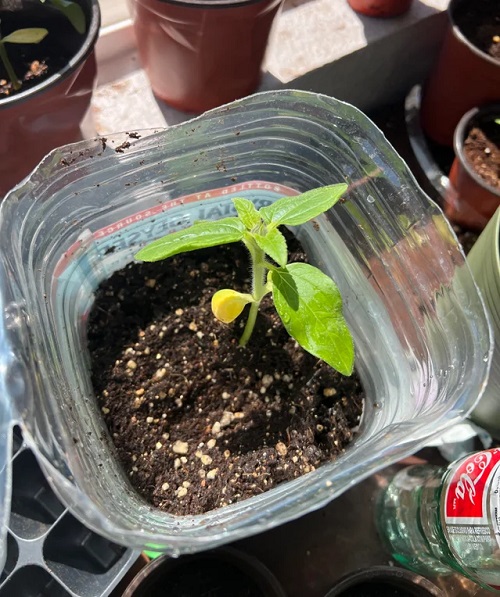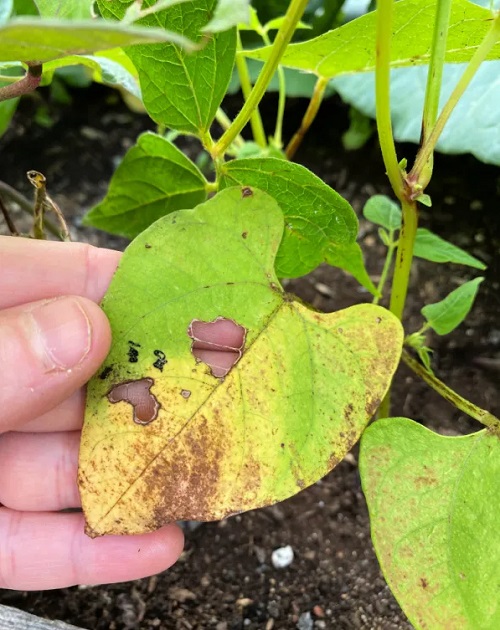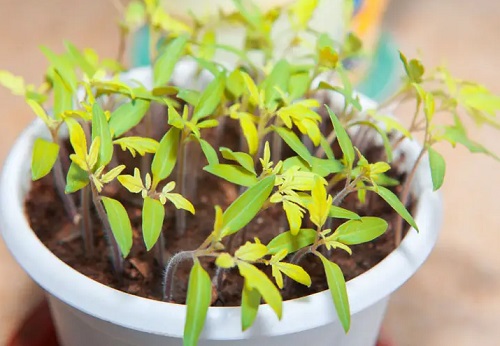Learn How to Fix Yellow Leaves on Seedlings and the main reasons behind this issue. We have the best tips for you!

Seedlings can be quite delicate and vulnerable to changes in their environment. Just like toddlers, they need to be carefully tended to in order to grow up strong and healthy. So, if you are worried about – How to Fix Yellow Leaves on Seedlings, then don’t be! We have the solutions for you!
Find out Reasons for Houseplants Leaves Getting Yellow and How to Save Them
How to Fix Yellow Leaves on Seedlings
1. Insufficient Light

Inadequate light can lead to yellowing or pale leaves in seedlings. Insufficient light hampers the process of photosynthesis, impacting chlorophyll production.
How to Fix Yellow Leaves on Seedlings: Ensure that seedlings receive adequate light by placing them in a well-lit area or using grow lights to supplement natural light.
Pro Tip: A morning direct sunlight for 4-5 hours will do wonders for the growth.
2. Excessive Sun
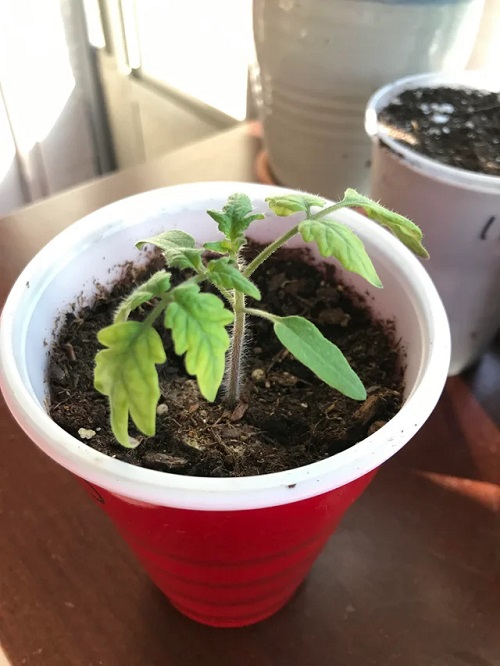
Seedlings that are exposed to intense, direct sunlight for prolonged periods can experience sunburn. The intense heat and radiation can damage the delicate tissues of the leaves, resulting in yellowing.
Seedlings that are not accustomed to direct sunlight can experience photoinhibition. Photoinhibition occurs when seedlings receive excessive light intensity beyond their capacity to photosynthesize. It leads to an imbalance between the energy absorbed by the leaves and the energy utilized for photosynthesis, resulting in yellowing or bleaching of leaves.
How to Fix Yellow Leaves on Seedlings: Seedlings are more susceptible to sunburn during the hottest hours of the day, typically between late morning and mid-afternoon. Try to provide direct sunlight during the morning or late afternoon hours when the intensity is less.
3. Overwatering or Poor Drainage
Excessive moisture in the soil can cause yellowing leaves in seedlings. Overwatering leads to root suffocation, nutrient leaching, and reduced oxygen availability. Poor drainage exacerbates the issue.
How to Fix Yellow Leaves on Seedlings: To address this problem, allow the soil to dry out slightly between waterings, improve soil drainage by amending it with organic matter, and ensure the seedling containers have proper drainage holes.
Here are Signs of Overwatering & How to Save an Overwatered Plant
4. Underwatering
When plants are underwatered, they respond by closing their stomata, which are tiny openings on the surface of leaves that regulate water loss and gas exchange.
Stomatal closure conserves water but also restricts the exchange of carbon dioxide and oxygen, hindering photosynthesis. Reduced photosynthesis affects the plant’s energy production and can result in yellowing leaves.
How to Fix Yellow Leaves on Seedlings: Develop a regular watering schedule based on the specific needs of your seedlings. Water thoroughly, ensuring that the soil is evenly moist but not waterlogged. Do this when the topsoil feels a little dry to the touch.
Look out for these 5 Sure Shot Signs of Underwatered Plants
5. Nutrient Deficiencies
Nitrogen is crucial for leaf development and overall growth. A lack of nitrogen can cause the yellowing of older leaves, starting from the tips and progressing toward the base. To address nitrogen deficiency, apply a balanced fertilizer with a higher nitrogen content or use organic nitrogen sources such as compost or fish emulsion.
Iron is essential for chlorophyll production, and its deficiency leads to interveinal chlorosis, where the leaf veins remain green while the spaces between them turn yellow. Treating iron deficiency involves using iron chelate or iron sulfate-based fertilizers or applying iron foliar sprays
6. Overfeeding
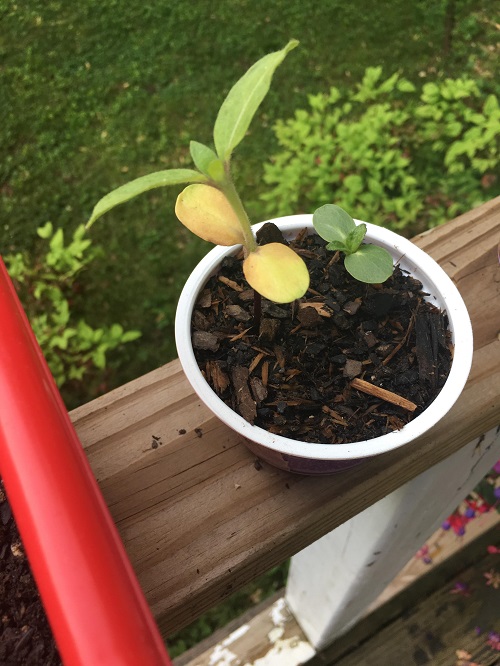
Excessive levels of certain nutrients can become toxic to seedlings. For example, high levels of nitrogen (N) can cause nitrogen toxicity, resulting in yellowing or browning of leaves. This condition is often referred to as “burning” or “fertilizer burn.”
Similarly, excessive levels of other nutrients like potassium (K), phosphorus (P), or micronutrients can also lead to toxicity symptoms and yellowing of leaves.
How to Fix Yellow Leaves on Seedlings: Always follow the recommended application rates and frequency specified on the fertilizer packaging. Avoid the temptation to apply more fertilizer than necessary, as excessive amounts can be detrimental to the seedlings.
7. Delay in Transplantation

If seedlings are kept in small containers for an extended period, their root systems can become root bound. This means the roots have outgrown the container and become tangled or densely packed.
As a result, the seedling’s roots may not have sufficient space to grow and access necessary nutrients and water. The limited root space can lead to nutrient deficiencies and water stress, causing the yellowing of leaves.
How to Fix Yellow Leaves on Seedlings: Transplant seedlings into larger containers or their final growing location at the appropriate stage of growth. Follow the recommended timeline for transplantation based on the specific plant species and their growth requirements.
Note: It’s important to note that transplanting seedlings can be a delicate process, and care should be taken to minimize root disturbance. Handle the seedlings gently, and ensure that the new containers or garden beds are properly prepared with suitable soil and adequate drainage.
Here are the Top Tips to Minimize Transplanting Shock
8. Pest or Disease Issues
Some pests or diseases can cause yellowing leaves in seedlings. Monitor seedlings for signs of pests like aphids, mites, or fungal diseases.
How to Fix Yellow Leaves on Seedlings: Treat pest or disease issues with appropriate measures, such as using insecticidal soaps or fungicides.
Click here to learn the Amazing Natural Pesticide Recipe that can Kill any Pest
Seedlings Cotyledons
The initial set of leaves that appear on a sprouting seedling are known as cotyledons. Although they are not considered genuine leaves, they have a crucial role in nourishing the plant and initiating photosynthesis.
This function is particularly essential for the seedling’s survival during the early stages when its roots are not yet capable of absorbing nutrients and moisture from the soil.
As the genuine leaves begin to develop and become sufficient for performing photosynthesis, the cotyledons will gradually turn yellow and drop off, which is a natural process and should not raise any alarm.

